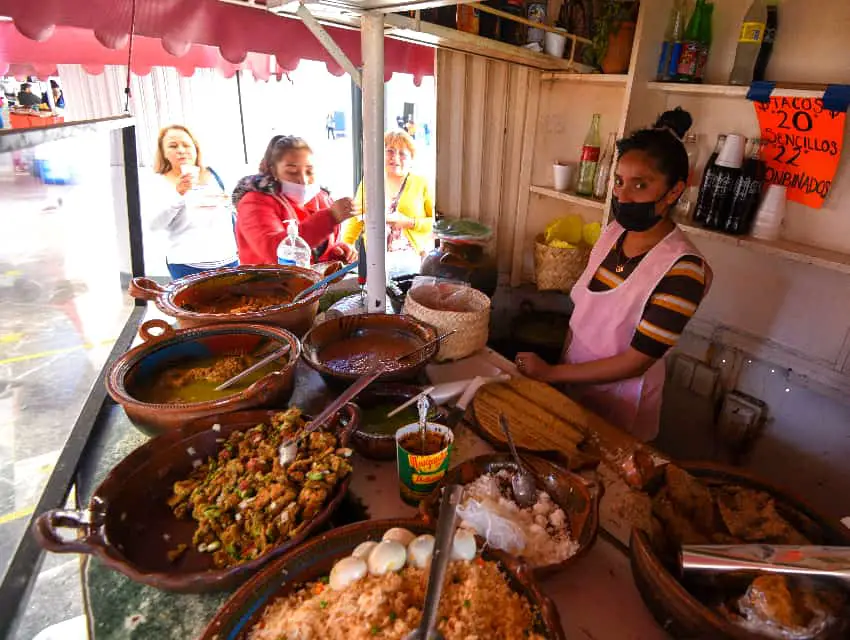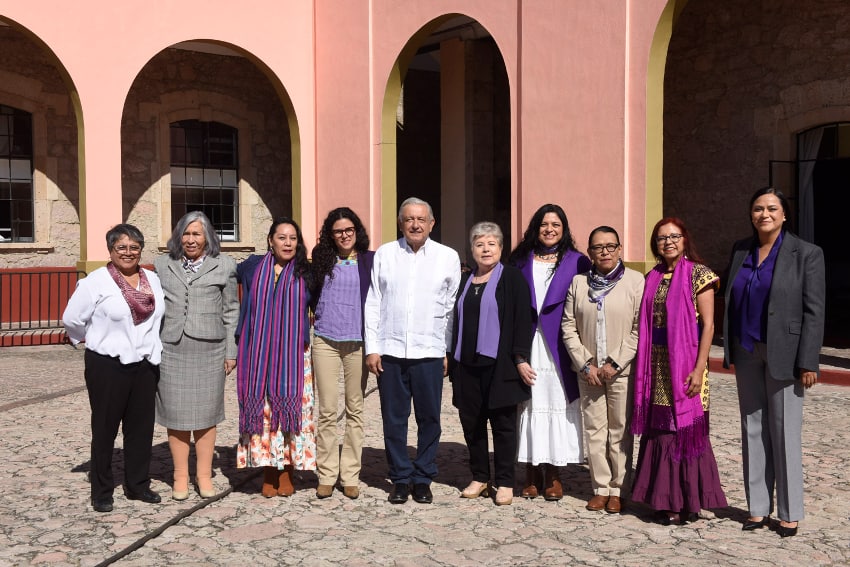Mexico in Numbers: Women in the workforce

The participation of women in the workforce in Mexico is on the rise, but a range of gender disparities remain, including in the areas of pay and representation in positions of leadership.
This International Women’s Day, Mexico News Daily has compiled a range of statistics that provide an overview of the presence of women in the Mexican workforce and illustrate a range of inequalities that persist in the national labor market.
The data mainly comes from recent surveys conducted by the national statistics agency INEGI and a study by the Mexican Institute for Competitiveness (IMCO), which published its findings earlier this week.
In the final section of the article, a range of proposals aimed at reducing inequality in the workplace and increasing the workforce participation rate for women are outlined.
Female labor force participation is increasing, but at a glacial pace
At the end of 2023, 46.5% of all working-age Mexican women were employed in the formal and informal sectors in Mexico. Excluding a dip during the COVID-19 pandemic, women’s workforce participation has increased gradually since 2005, when 41% of Mexican women had paid jobs.
However, the percentage of women in the workforce still lags the participation rate for men by more than 30 points.
At the pace that women’s workforce participation has increased over the past two decades, it will take 119 years to close the gap between the sexes, according to IMCO, a Mexico City-based think tank
In a recent report, Citibanamex highlighted that the labor force participation rate for women in Mexico is currently well below the 53.3% average across Latin America. IMCO said that Mexico has the fourth lowest rate in the region and stressed that the entry of more women into the Mexican workforce would not only benefit women personally but also increase Mexico’s competitiveness as a nation.
One positive is that of almost 630,000 new formal sector jobs created in Mexico in the first two months of 2024, 51.2% went to women. Labor Ministry data shows that an impressive 92.4% of new formal sector jobs in Tamaulipas went to women, while the percentage was above 70% in Sinaloa and above 60% in Baja California Sur, Sonora, Jalisco and Michoacán.
However, women filled just 27.9% of newly created jobs in Hidalgo, and the percentages were also low in several other states including Guerrero (30.5%); Campeche (31.5%); Quintana Roo (39.7%); Chiapas (39.8%); and Mexico City (40.6%).
How many women are in paid work? How much do they earn? Which sectors employ the most women?
Some 24.2 million women are in paid employment in Mexico, and they account for around four in ten of all workers in the country.
An INEGI survey in 2022 found that women on average earned 6,360 pesos (US $378 at today’s exchange rate) per month, while men had average monthly salaries that were over 50% higher at 9,762 pesos.
Average salaries for women (and men) have risen since then, in large part due to annual increases in the minimum wage.
While in 2022, women only earned 65 pesos for every 100 pesos paid to men, the income gap between genders has declined to 15%, the El Economista newspaper reported.

It said that half of all working women now earn the minimum wage or less — just under 7,500 pesos (US $446) per month in most of the country — while the other half earn more than that.
Women working in the formal sector must be paid at least the minimum salary, but 54% of working women in Mexico are employed in the vast informal sector and thus don’t pay taxes, but also don’t have access to social security benefits and don’t have any guaranteeing of earning the minimum daily wage, which since Jan. 1 has been just under 250 pesos (about US $15).
Around eight in ten Mexican women work in the commerce (retail/wholesale) and services sectors, data shows. Among the women in those categories are informal workers, including those who sell food or consumer goods in markets, on the street and in other public places such as the Mexico City metro system.
One services sub-sector that is dominated by women is domestic, or household, services. Around 90% of domestic workers — including cleaners and maids commonly known as muchachas — are women. Very few of those workers have access to social security benefits, even though the Supreme Court ruled in 2018 that employers must make them available and a law to that end was approved by Congress in 2022.
Female representation in leadership positions
In Mexico, only 13% of the positions on the boards of companies listed on the stock exchange are occupied by women, according to IMCO. That figure is 17 points below the global average, IMCO said.
To change the situation “the will” of both board members and company owners is required, according to Irene Espinosa, a deputy governor of the Bank of Mexico and member of its governing board.
One in four companies in Mexico have boards made up exclusively of men, El Economista said.
Women are well represented in federal cabinet, occupying key positions including interior minister (usually considered the second most powerful position in the Mexican government), foreign affairs minister, economy minister and security minister. However, IMCO said that only 33% of high-ranking positions within ministries are occupied by women.

Close to one-third of Mexico’s 32 states have female governors, while the country is almost certain to get its first female president this year, as ruling party candidate Claudia Sheinbaum is the heavy favorite to win the June 2 election and her main rival is Xóchitl Gálvez, who will represent a three-party opposition alliance.
3 in 10 Mexican women have experienced workplace violence
IMCO said in a report that three of 10 Mexican women have experienced workplace violence during their working life.
“The kind of violence that women report with the greatest frequency is discrimination due to reasons of gender,” the think tank said.
Fewer than one in 10 women — 8% — who have suffered violence or discrimination in the workplace reported it, according to IMCO.
Two decades into the 21st century, women still do most of the housework
On average, women spend 40 hours per week on household chores, including looking after children or elderly family members, whereas the figure for men is significantly lower at 16 hours, according to IMCO.
More than 17 million Mexican women dedicate themselves exclusively to such work, while only 992,000 men do the same, the think tank said.
“Unpaid work has an economic value for the country, which INEGI estimates is more than 7.2 trillion pesos [per year],” IMCO said, adding that “women contribute 2.6 times more economic value than men” as a result of the uncompensated labor they perform.
How can Mexico move toward gender equality in the labor market?
IMCO highlighted that many women take leave from their careers when they become mothers and noted that women’s progression toward high-ranking positions can be “limited” both due to motherhood and other care responsibilities that disproportionately fall on their shoulders.
“The choice to interrupt a professional career is not just a personal decision, but also one that is often motivated by an absence of policies of inclusion and care alternatives,” the think tank said.
It said that it is “crucial” for both the public and private sector to “invest and collaborate in an inter-sectorial way in order to establish favorable conditions that allow women to progress in their careers and reach leadership positions.”

The promotion of more women to high-ranking positions within organizations will inevitably lead to a reduction in the gender pay gap.
IMCO advocated the “redistribution of care work” through the establishment of a “national care system,” which it described as “a system of coordination between public institutions that attends to the country’s care needs.”
“The Ministry of Finance and Public Credit estimates that it would require an annual public investment equivalent to about 1.4% of national GDP, which could be financed by a tripartite system … [including] the state, companies and collaborators,” it said.
“To achieve it, a constitutional reform that recognizes that every person has the right to decent care is needed,” IMCO said.
To distribute care duties more equitably between new parents, the think tank said that the length of paternity leave should be similar to that of maternity leave. By law, women are entitled to 84 days of maternity leave, but men only have access to five days paid leave upon the birth of a daughter or son.
IMCO also said that employers can do a range of things to create more equitable workplaces, and directed them to resources such as the United Nations’ Women’s Empowerment Principles.
Those principles include to “promote education, training and professional development for women” and to “implement enterprise development, supply chain and marketing practices that empower women.”
The World Bank last year published a range of “interventions” that could help to increase labor force participation for women and close gender pay gaps. The measures it outlined were placed in three categories: effective; emerging/promising; and less promising.
Among the interventions classified as “effective” were:
- Providing affordable, accessible, and quality childcare services
- Imparting sector-specific training, like in STEM (science, technology, engineering and mathematics), to address occupational segregation and prepare women for future jobs, and
- Promoting pay transparency in firms to reduce gender pay gaps.
With reports from El Economista and La Jornada
Source: Mexico News Daily

